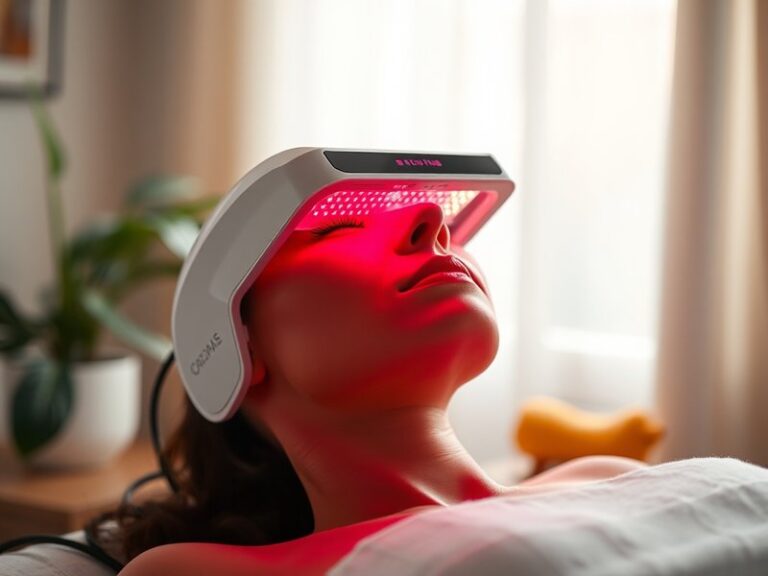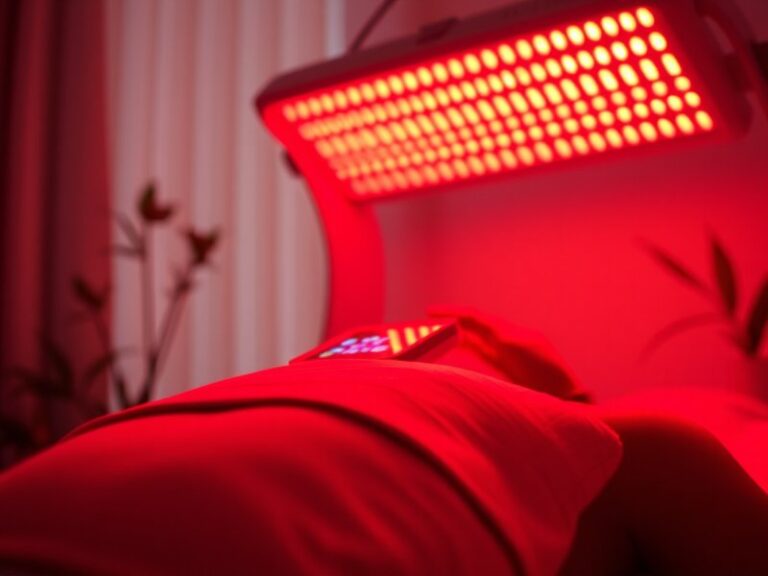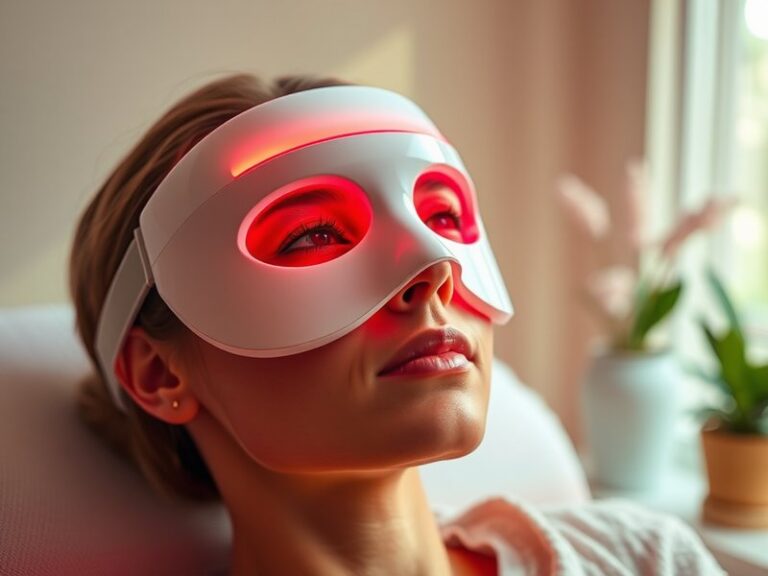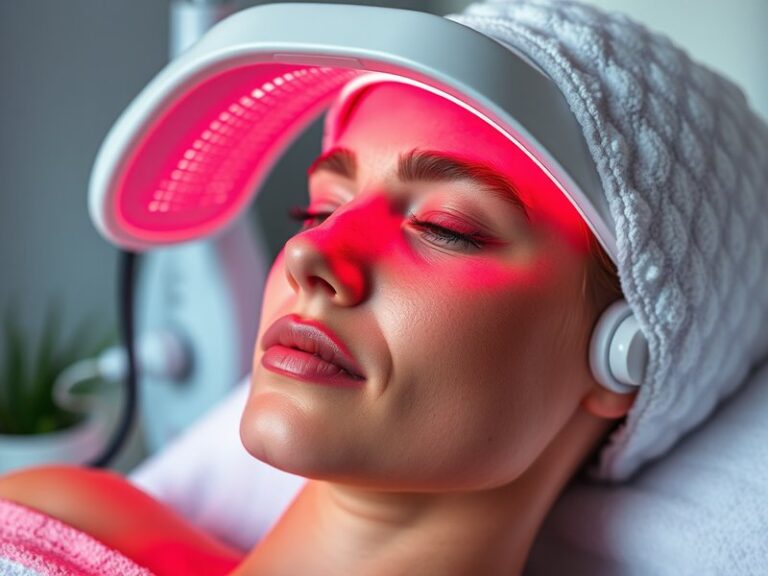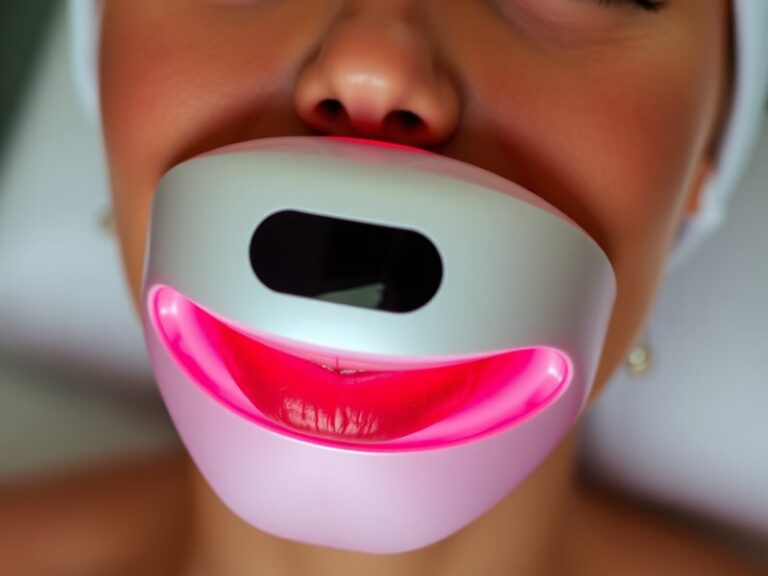Can Red Light Therapy Help Hypopigmentation?
Can Red Light Therapy Help Hypopigmentation?
Can red light therapy effectively address the challenges posed by hypopigmentation in the skin?
For more insights, see Red Light Therapy After Laser Hair Removal?
Hypopigmentation is a common condition characterized by patches of skin that are lighter than the surrounding area due to a decrease in melanin production. This article explores the impact of red light therapy on hypopigmentation, examining its mechanism of action, benefits, practical considerations, and possible alternatives to treatment.
Key Takeaways
- Red light therapy may stimulate melanin production and improve skin pigmentation.
- Multiple sessions and consistency in treatment are essential for noticeable results.
- Consultation with a dermatologist is recommended before starting therapy.
What is Hypopigmentation?
Hypopigmentation occurs when the skin loses its pigment, resulting in lighter patches. This condition can arise from various causes, including:
- Skin Injuries: Trauma from burns, cuts, or surgeries can lead to reduced melanin.
- Skin Conditions: Conditions like vitiligo or albinism can affect melanin production.
- Environmental Factors: Sun exposure or chemical irritants can alter pigmentation.
Understanding the underlying cause of hypopigmentation is crucial, as it influences the most effective treatment approach.
What are the Benefits of Red Light Therapy?
Red light therapy involves exposing the skin to low-level wavelengths of red or near-infrared light. This non-invasive treatment has several potential benefits for hypopigmentation.
Stimulating Melanin Production
Red light therapy can improve cellular function and stimulate the melanocytes, the cells responsible for producing melanin. Increased melanin levels can help darken hypopigmented areas over time.
Don’t miss Do I need tanning lotion?
Enhancing Skin Healing
The therapy promotes collagen production and enhances overall skin health. Improved skin healing can minimize the appearance of scars or blemishes, which might also contribute to uneven pigmentation.
Reducing Inflammation
Red light therapy has anti-inflammatory properties, which may benefit individuals whose hypopigmentation results from skin conditions. By reducing inflammation, the therapy can create a healthier environment for pigment restoration.
Is it Possible to Treat Hypopigmentation with Red Light Therapy?
Yes, it is possible to treat hypopigmentation using red light therapy. However, the effectiveness varies based on individual factors such as skin type, the extent of pigmentation loss, and the treatment’s consistency.
What are the Advantages of Red Light Therapy?
Red light therapy offers several advantages for patients with hypopigmentation.
Non-Invasive Approach
Unlike chemical peels or surgical procedures, red light therapy is non-invasive and typically involves minimal risk of side effects.
Home Treatment Options
With the availability of at-home red light devices, individuals can incorporate therapy into their daily routines without frequent clinic visits.
Supportive for Overall Skin Health
In addition to targeting hypopigmentation, red light therapy improves skin texture, tone, and overall appearance, contributing to more radiant skin.
Accessible Treatment
Red light therapy is becoming increasingly accessible, as more clinics offer this service, and at-home devices are gaining popularity.
What are the Things to Consider Before Trying Red Light Therapy?
Before starting red light therapy for hypopigmentation, several considerations should be taken into account.
Consult with a Dermatologist
It is essential to consult with a dermatologist to confirm that red light therapy is appropriate for your specific type of hypopigmentation and to rule out any underlying conditions.
Set Realistic Expectations
Treatment requires patience and consistency. Results may take time, and it’s vital to set realistic goals based on your condition.
Understand Device Quality
When using home devices, ensure they are of high quality and emit the appropriate wavelengths for effective treatment. Not all devices are created equal.
Consider Skin Sensitivity
Individuals may have varying responses to red light therapy. Monitor your skin’s reaction and adjust the treatment plan as needed.
What are the Alternatives to Red Light Therapy?
If red light therapy isn’t suitable or desired, there are alternative treatments for hypopigmentation.
Topical Treatments
Creams containing ingredients like hydroquinone or retinoids may effectively promote skin pigmentation and can be used alongside red light therapy.
Microneedling
Microneedling involves creating tiny wounds in the skin to stimulate healing and may enhance pigment production in hypopigmented areas.
Chemical Peels
Chemical peels can encourage skin renewal and may improve pigmentation issues by removing dead skin layers.
Laser Therapy
Laser treatments are designed to target specific skin issues, including hypopigmentation. These procedures can deliver faster results but might involve more downtime.
Conclusion: Is it Recommended to Use Red Light Therapy for Hypopigmentation?
Red light therapy presents a promising option for addressing hypopigmentation, offering several benefits in terms of stimulating melanin production and enhancing overall skin health. While it may not be a guaranteed solution for everyone, its non-invasive nature and growing accessibility make it a compelling treatment to consider. Consult with a dermatologist to determine if red light therapy is the right choice for your individual skin concerns.
Frequently Asked Questions
How long does it take to see results from red light therapy?
Results can vary; some individuals may notice improvements within a few weeks, while others may take several months of consistent therapy for noticeable changes.
Is red light therapy safe for all skin types?
Red light therapy is generally considered safe for all skin types. However, individual skin sensitivities should be evaluated prior to treatment.
Can I combine red light therapy with other treatments?
Yes, red light therapy can often be combined with other treatments such as topical medications or microneedling to enhance results.
How often should I undergo red light therapy sessions?
Typically, sessions are recommended 2-3 times a week for optimal results. Always follow the guidance of your skin care professional.
Are there any side effects associated with red light therapy?
Side effects are rare and may include temporary redness or irritation at the treatment site. It is essential to monitor your skin’s response and adjust treatment accordingly.

